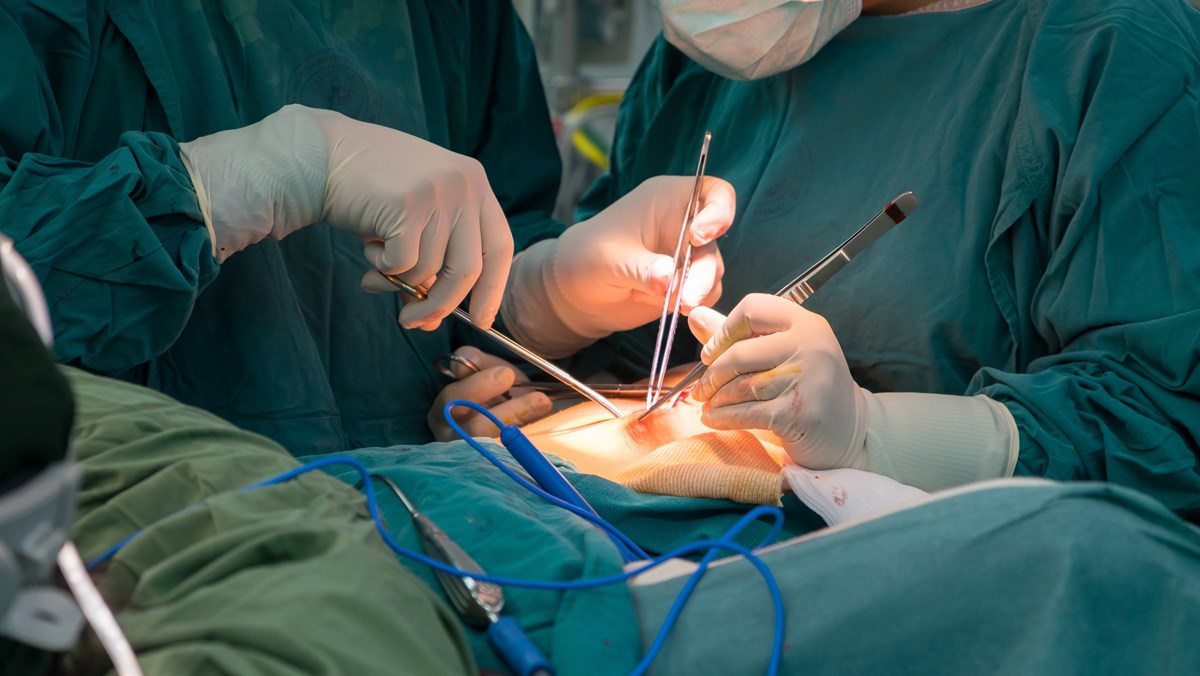Health care is a delicate topic. So delicate, in fact, that comparing it to something as impersonal as the mass production of cars seems almost cold. But what if some of our most dire health care problems, such as the rising costs of surgical procedures, could be solved by treating the industry more like Henry Ford’s famous Piquette Avenue Plant?
In the 1920s, Henry Ford revolutionized the auto industry when he found a way to mass produce the automobile at a price that the middle class could afford. Prior to Ford’s Model T, automobiles were a luxury reserved only for the rich. But through economies of scale and the assembly line, Ford mastered the art of mass production. By maximizing his output of cars, he was able to reduce marginal costs, which in turn introduced the automobile to an entirely new class of people.
But what could Henry Ford’s Model T possibly tell us about making surgical procedures cheaper and more accessible to a wider range of people? As it turns out, quite a lot.
As American health care costs continue to rise, many are unable to pay for the procedures they so desperately need. In fact, someone needing an open heart surgery in the United States may be expected to pay nearly one million dollars in medical costs. And as politicians continue to argue over how to make health care more affordable, medical innovators are taking a page out of Henry Ford’s playbook. One such innovator is Dr. Devi Shetty.
A Different Kind of Doctor
Since he was a small boy growing up in southern India, Shetty knew he wanted to be a doctor. Throughout his childhood, he watched in amazement as local Mangalore doctors revived his father each time he fell into a diabetic coma. This gave Shetty and his eight brothers and sisters tremendous respect for the profession that repeatedly saved their father’s life.
Since he was a small boy growing up in southern India, Shetty knew he wanted to be a doctor.
When he was in the fifth grade, Shetty’s teacher excitedly informed the class that the world’s first heart transplant had been performed. And as his classmates marveled at this medical miracle, young Shetty had an epiphany: he was going to be a heart surgeon.
After completing medical school in India, Shetty left for England where he performed heart surgery at the prestigious Guy’s Hospital in London for six years. While he was content with his work, he decided to return home to India after a prominent industrialist offered him a position at a new heart hospital he was opening in Calcutta. This decision, and the experiences he encountered while operating in this hospital, would later redefine Dr. Shetty’s entire career.
Upon returning to India, Dr. Shetty rose to prominence after the world-renowned Catholic missionary Mother Teresa sought his care after suffering a heart attack. After she had received, and successfully recovered from, the lifesaving surgery administered by the doctor, the future saint then asked him to be her personal physician, an offer he could hardly refuse. And while this rather famous patient is what initially pushed him into the public spotlight, it is his unique approach to heart surgery that makes Dr. Shetty truly extraordinary.
As he continued to perform heart surgeries in Calcutta, Shetty was saddened to learn that most of his patients did not have the means to pay for the procedure. $2,400 was a lot of money for his patients and many simply didn’t have it. “When I told patients the cost, they would disappear. They literally didn't even ask about lowering the price,” he once said. But Dr. Shetty was not content to simply stand by as his patients went without care. Instead, he found a way to entirely revolutionize the field of heart surgery by approaching it from an entrepreneurial perspective.
Much like Henry Ford, Shetty had a vision of taking what was considered to be a luxury item that only the wealthy can afford, and making it accessible to all people.
Economies of Scale
If Dr. Shetty was going to lower the costs of surgery he was going to need to cut costs while also maximizing output. But in order to have the authority to make those types of administrative decisions, he was going to have to start his own hospital. So he did.
In Shetty’s hospital, the doctors respond to actual demand; if there are patients needing surgery, then they find a way to meet that demand.
In 2001, the Narayana Hrudayalaya Hospital opened its doors. Completely funded by private entities, the facility has over 1,000 beds. To understand how truly impressive this number is, in the United States, hospitals average around 160 beds for patients receiving heart surgery. This allowed the hospital to drastically multiply the number of surgeries that could be performed each day. It also drove costs down— way down.
As reported by Harvard Business School:
The purpose of the hospital was to offer healthcare for the masses… The interesting aspect of its business formula was its ability to offer such complex surgeries as CABG (popularly known as bypass surgery) for about $2,000, which was substantially less than other similarly equipped hospitals in India.“
To put this price perspective, the same surgery in the United States would cost a health care consumer around $75,345. This is because in many countries, like the United States, there are regulations that restrict the number of surgeries that can be performed by each surgeon. For this reason, most U.S. hospitals only perform about 32 heart surgeries per day. But capping the number of surgeries performed each day goes against market demand and serves to keep the cost of surgery high by controlling the supply.
In Shetty’s hospital, the doctors respond to actual demand; if there are patients needing surgery, then they find a way to meet that demand. On average, Shetty and his team of surgeons perform over 300 heart surgeries a day. In fact, in the course of his career Dr. Shetty has performed over 20,000 heart surgeries himself. That number is about six times more than the average American surgeon is expected to perform in their lifetime. And at only 62, Dr. Shetty has many surgeries yet to perform.
Commenting on his unique health care model, Shetty said:
Japanese companies reinvented the process of making cars. That's what we're doing in health care. What health care needs is process innovation, not product innovation."
But while many are applauding what Shetty has been able to accomplish, there are others who worry that Shetty’s increase in quantity might result in a decrease in quality.
On one level, it's a damn good idea. My only issue with it comes from the fact that if you pursue wholesale volumes, you may give up something -- which is usually quality," Indian physician Amit Varma said. He continued, "I think he has reached the point where if you increase volume any more, you could compromise patient care unless backed up by very robust standard operating procedures and processes.”
And while there is some validity to Varma’s fears, in Shetty’s case, the opposite seems to be the case. Narayana Hrudayalaya Hospital has a 1.4 percent mortality rate as compared to the 1.9 percent average in United States’ hospitals. But even these comparisons don’t tell the full story, as the Wall Street Journal points out:
It isn't possible truly to compare the mortality rates, says Dr. Shetty, because he doesn't adjust his mortality rate to reflect patients' ages and other illnesses, in what is known as a risk-adjusted mortality rate. India's National Accreditation Board for Hospitals & Healthcare Providers asks hospitals to provide their mortality rates for surgery, without risk adjustment.
...Dr. Shetty's success rates would look even better if he adjusted for risk, because his patients often lack access to even basic health care and suffer from more advanced cardiac disease when they finally come in for surgery.”
When asked how his surgeons are able to perform such high numbers of high-quality heart surgeries, Dr. Shetty says:
Practice makes perfect. There is learning by doing. The more times you do something, the better you get at it.”
The Future of Health Care
While he has already changed and saved many lives, Dr. Shetty is not content to stop at heart surgeries. As health care costs rise, medical tourism is on the rise as well. Since so many jurisdictions have strict health care regulations, innovation has been stifled. As a result, many American and European health care consumers are choosing to travel abroad in search of less expensive care. And with doctors with reputations like Shetty, who can blame them?
While he has already changed and saved many lives, Dr. Shetty is not content to stop at heart surgeries.
Continuing his mission to make quality health care accessible to all, Shetty is involved in a project called Health City. Located in the Cayman Islands, Health City is where many of Shetty’s proteges now practice. Offering medical services at a third of the cost as the United States, Health City has become a prime medical tourist spot. In fact, many of the procedures come in packages that include airfare and lodging all offered at a price far lower than the procedure would cost in the United States.
But there is something more to this location other than being a destination for Americans in search of lower cost health care: its proximity to places like the Caribbean, for example. As Shetty explains it:
There are 40 million people living in the Caribbean. Before Health City, the only option for serious medical care was the United States – assuming the patient could afford it. Now there is an alternative.”
By treating health care as a mass product, Shetty has been able to increase the quality of care, while making it financially accessible to a wider range of people. Instead of looking to government to fix our health care system, we should be looking to innovators like Dr. Devi Shetty.

